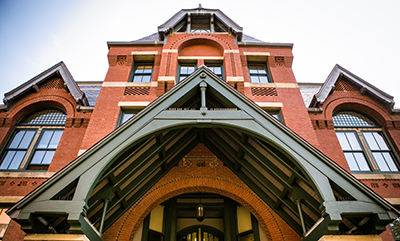What Will Happen if Abortion Continues
What Will Happen to Women's Health If Abortion Is Banned?
 Access to legal abortion is under threat in the US as never before in the post-Roe era. Anti-abortion laws passed in states like Alabama and Missouri have all but ended legal abortion access in these areas. If legal challenges to these laws reach the Supreme Court, the Court's new conservative majority raises the possibility that the precedent set by Roe v. Wade in 1973 will not be upheld, clearing the way for conservative states effectively ending access to abortion for millions of women.
Access to legal abortion is under threat in the US as never before in the post-Roe era. Anti-abortion laws passed in states like Alabama and Missouri have all but ended legal abortion access in these areas. If legal challenges to these laws reach the Supreme Court, the Court's new conservative majority raises the possibility that the precedent set by Roe v. Wade in 1973 will not be upheld, clearing the way for conservative states effectively ending access to abortion for millions of women.
Limiting access to abortion harms the health of women. Recently, Planned Parenthood President Dr. Leana Wen was criticized for saying that, before Roe, thousands of women died of abortion-related deaths each year, and that, if Roe falls, we could return to something like this reality. A Washington Post fact-check took particular issue with these statements challenging both the number of deaths pre-Roe, and whether that represents a realistic assessment of deaths if Roe were overturned.
Did thousands of women die annually from the complications of illegal abortion pre-Roe? As an epidemiologist, I feel comfortable saying that we cannot know for sure how many women died from illegal abortions in the years before Roe. What data we have are old, much of it coming from a time when stigma, and the procedure's then-illegality, likely meant significant underreporting of maternal deaths caused by abortion. Best available evidence suggests that the number of yearly deaths could well have been in the thousands. A Guttmacher Institute report suggested that in 1930 abortion was named as the cause of death for nearly 2,700 women.Other estimates place the number of annual deaths higher or lower, depending on the year and available data. The pre-Roe question is fundamentally unanswerable given the state of the data from that era.
Perhaps the more important question is forward-looking: What will happen to the US if abortion does become illegal in many states?
What we do know should be plenty to give us pause. Countries where restrictive laws are currently making the practice less safe do indeed face thousands of deaths related to unsafe abortion. Each year, globally, at least eight percent of global maternal deaths are estimated to have been caused by complications from an unsafe abortion, with as many as 22,800 women dying annually. In addition, we know that deaths related to illegal abortion are likely just the tip of the iceberg of complications related to unsafe abortion. The most recently available data suggest that 7 million women were treated for complications from unsafe abortions, or an annual rate of about 6.9 per 1,000 women ages 15-44. Amazingly, about 40% of women who do experience complications never receive treatment. Maternal death and disability from abortion are preventable if abortion is available and safe.
Should the US once more join the group of countries with restrictive abortion laws, it will revert to a status quo many thought it left behind in 1973, one that looks a lot like the countries in the world today where abortion is severely restricted. Abortion in many states will become an underground practice, often carried out by people who lack the expertise to do it safely, sometimes in unsanitary conditions. We would see a return of women harming themselves, tragically, by trying to self-induce an abortion. And these consequences will be felt primarily by the socioeconomically marginalized, primarily poor women and women of color.
The Washington Post fact-check suggested that fewer women might die now if abortion became illegal than they did pre-Roe because medical care, including the availability of antibiotics, is better than it was then. Perhaps. But that assessment is, in my estimation, naïve, resting on a counterfactual assumption that we can change one big thing—in this case access to abortion—and that alone, while everything else will stay the same. That will almost certainly not be the case if Roe is overturned. A movement against legal abortion will open the door to challenges to reproductive health more broadly, ranging from contraception bans to new social norms based on misinformation and stigma. An abortion ban will almost certainly result in increased reluctance among women to seek medical care for a broad range of reasons, extending well beyond abortion itself. Additional pregnancies carried to term add another layer of medical consequences, not to mention the social and economic consequences of unplanned pregnancies.
The exact number of maternal deaths a US abortion ban will cause is unknowable. But the exact number ultimately should not matter to anyone for whom even one such death is unacceptable, to anyone who understands the enormous cascade of consequences restricting access to abortion in this country will have. Fundamentally, Dr. Wen is correct—recent political shifts that threaten to undermine Roe will kill many, and simply should be unacceptable to anyone who cares about the health of women.
I hope everyone has a terrific week.
Warm regards,
Sandro
Sandro Galea, MD, DrPH
Dean and Robert A. Knox Professor
Boston University School of Public Health
Twitter: @sandrogalea
Acknowledgment: I am grateful to Eric DelGizzo and Catherine Ettman for their contributions to this Dean's Note.
Previous Dean's Notes are archived at: http://www.bu.edu/sph/tag/deans-note/
Explore Related Topics:
Source: https://www.bu.edu/sph/news/articles/2019/what-will-happen-to-womens-health-if-abortion-is-banned/
0 Response to "What Will Happen if Abortion Continues"
Post a Comment